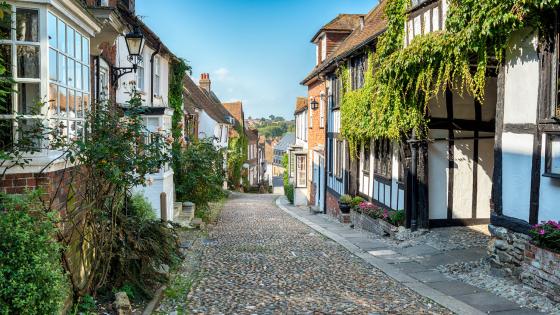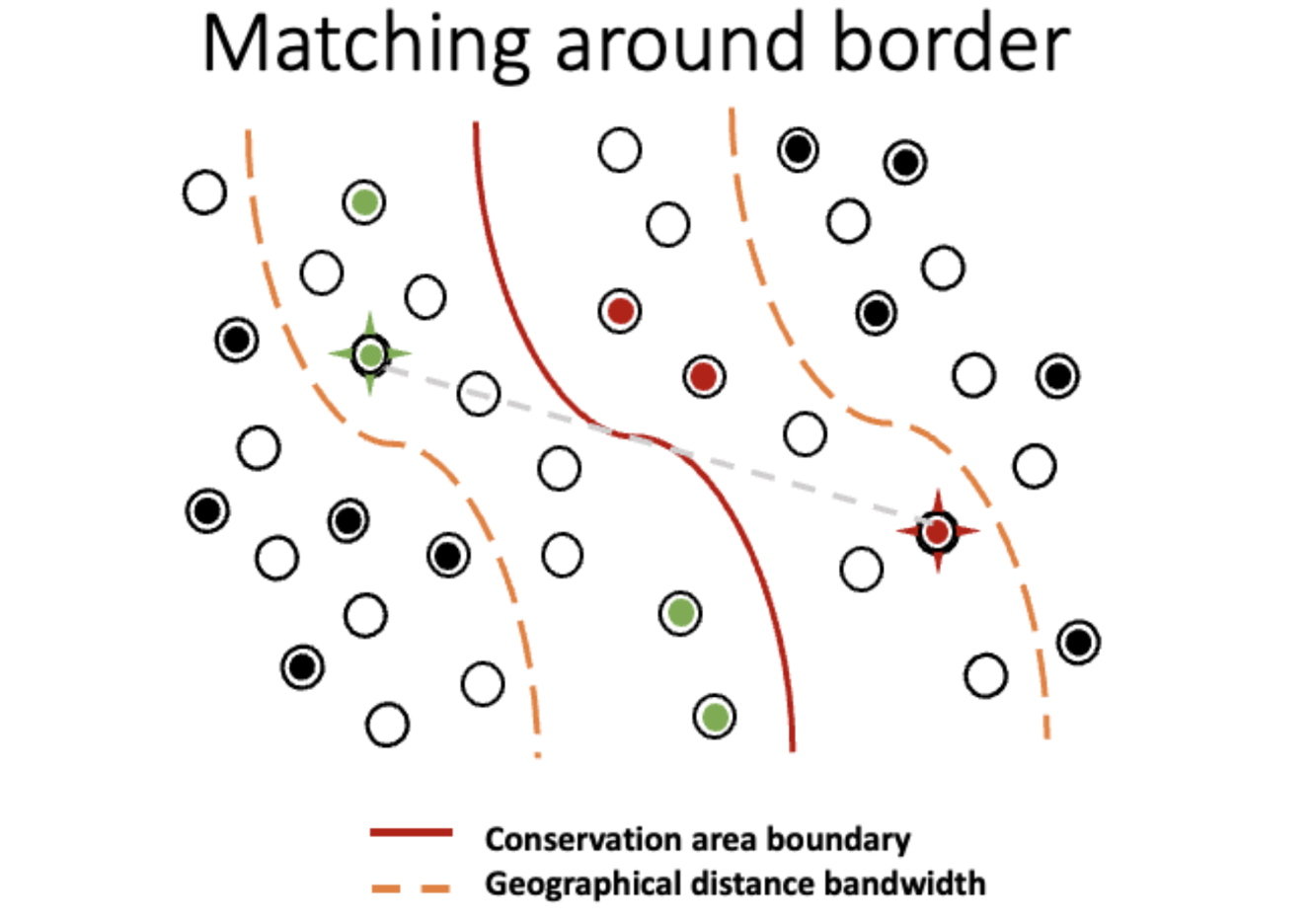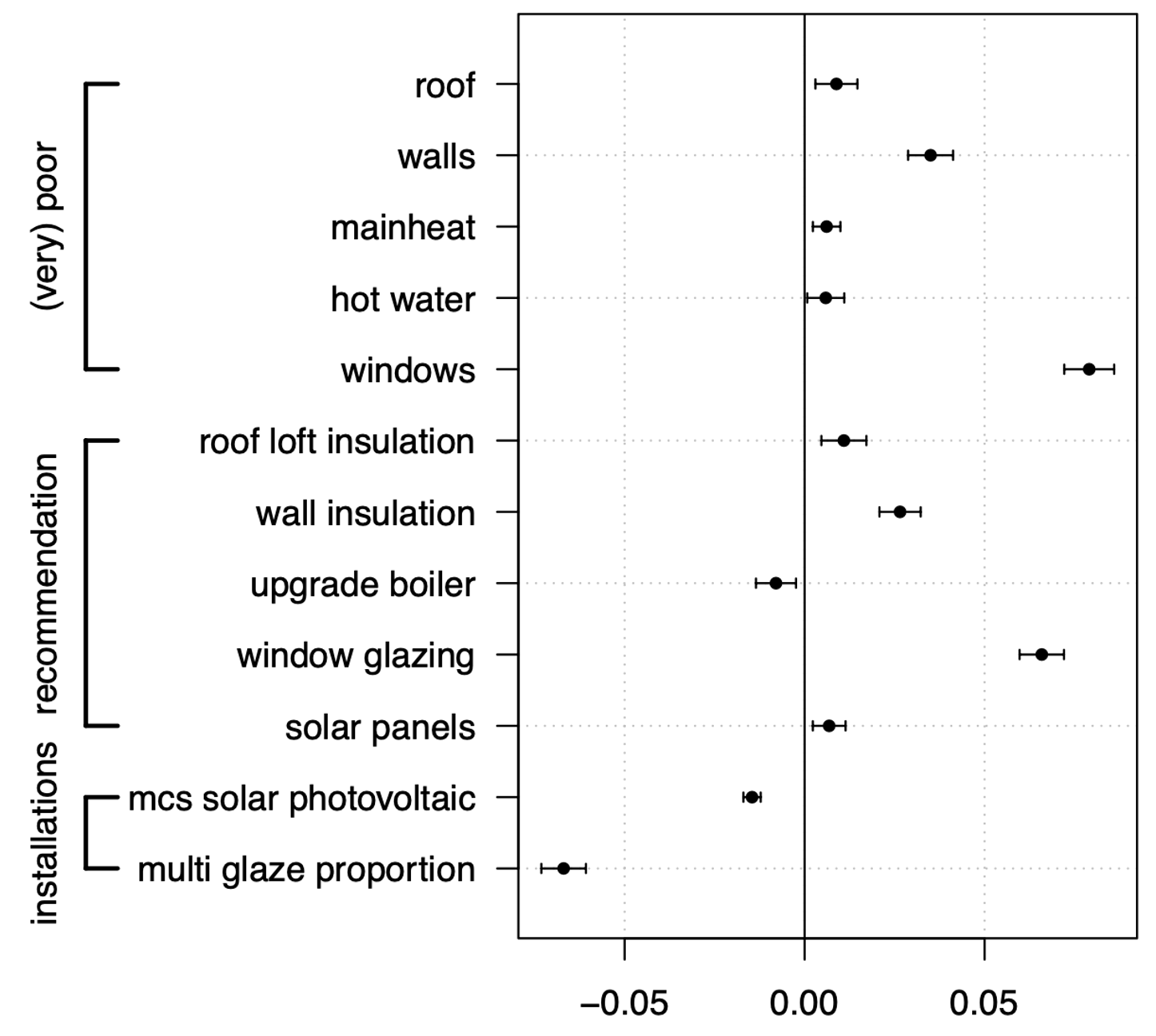Aesthetic norms often serve as a means to justify planning or zoning restrictions. They are a ubiquitous feature across societies and have been shown to affect economic outcomes such as rents or house prices (Hilber and Vermeulen 2010, Glaeser and Gyourko 2018), social and political outcomes such as segregation (Schelling 2006, Trounstine 2018, Mulrenan 2019), parliamentary representation (Campion 2023), and, indirectly, redistributive preferences and public good provision (Trounstine 2016 Xu 2020) across countries. Indeed, social science research shows that such norms are not only designed to structure and regulate social spaces, “the spaces between us” (Enos 2017), but that they are also sticky: once implemented, they are difficult to repeal.
In this way, relatively old spatial institutions can impose constraints on achieving modern objectives such as decarbonising our economies. In this column, I explore the barriers to climate action implied by conservation areas – as an archetypal spatial institution implying a heavy set of restrictions that can explain climate inaction. In doing so, I argue for a reappraisal of the balance between the desire to protect an area’s character and the wish to improve energy efficiency.
Carbon footprint of housing
The poor energy efficiency of much of the world’s housing stock presents a significant challenge for the net zero ambitions of many countries. The residential sector is a key source of greenhouse gas emissions. In the UK, it contributed 23% of the country’s CO2 emissions (ONS 2022). Yet, progress in reducing the carbon footprint of the housing stock has been very slow. Extensive work has gone into identifying explanations for low rates of retrofitting. Fowlie et al. (2015, 2018) explore the monetary and non-monetary costs, suggesting that the benefits do not outweigh the costs, while Allcott and Greenstone (2012) consider a broad range of other mechanisms.
My new research examines one very specific barrier in England – the restrictions that apply to properties located within conservation areas. There are around 10,000 conservation areas in England, and I have data for around 7,500 of them from 239 out of 317 English local authorities with exact boundaries, as shown in Figure 1. These cover around 2 million residential properties, or 10% of the residential housing stock. I find that these homes in conservation areas may be responsible for between 3 and 4 million tonnes of avoidable CO2 emissions every year.
Figure 1 Extent of conservation area distribution across local authorities
Building on work by Hilber et al. (2019), who identify the role historic preservation policies play in increasing both private energy costs and the social cost of carbon, I develop this line of research in new directions. Using millions of data points, I quantify how large the impact of conservation area status is on the energy efficiency gap, measure its drivers, and document that the energy efficiency gap of properties inside conservation areas has grown, relative to properties outside conservation areas. Finally, I show that there may be other knock-on effects on planning processes for properties inside conservation areas, hampering the ability of planning departments in local authorities to respond to the climate emergency via agile and timely policies.
Conservation areas: A brief history of a sticky spatial institution
Conservation areas, like zoning restrictions, are an example of sticky spatial institutions, adopted decades ago, that now constrain individuals in responding to present needs, such as ramping up housing supply or retrofitting homes. Conservation areas were an innovation of the 1960s, a period when many British towns and cities were being reshaped to accommodate rising private car ownership. Concern about this rapid change led to the introduction of protective measures.
But these measures are now preventing actions that are urgently needed to grapple effectively with the climate emergency. Many residents seek to cut their energy consumption – but conservation areas pose multiple barriers to climate action, perverting their original intention as schemes to protect the lived environment.
The Planning (Listed Building and Conservation Areas) Act 1990 defines conservation areas as "areas of special architectural or historic interest, the character or appearance of which it is desirable to preserve or enhance”. Local planning authorities have the statutory duty to identify, designate, preserve, and enhance conservation areas. While the definition of “character” is a fuzzy one – drawing on street patterns, building styles, open spaces, views, or even human activities such as market squares – the restrictions that come with conservation area status are sharp.
Simple retrofitting measures, which would be allowed on an equivalent property not located within a conservation area – such as double glazing, installation of visible heat pumps or photovoltaic panels, and exterior wall insulation – require approvals, a potentially lengthy and often expensive process involving consultation and local consent.
It is this added retrofit gap that results from this regulatory burden – over and above the poor energy efficiency standard of English homes that my co-authors and I quantified in Fetzer et al. (2022) – that I identify and quantify in my new paper (Fetzer 2023). I also document that this conservation area status retrofit penalty has widened over the last 10-15 years. The desire to maintain an appealing character in these areas comes at a cost of 3 to 4 million tonnes of avoidable CO2 emissions per annum.
Identifying the gap
I studied millions of datapoints using a variety of microeconometric methods to show that (i) the specific rules applying to properties inside conservation areas impede retrofitting, and (ii) that they are directly responsible for excess CO2 emissions.
These different methods all yielded similar results. The method that is easiest to explain is the matching approach. For each property that is physically located inside a conservation area, I find a comparison property within 500 metres of the boundary that is identical as regards their built form, construction age, listed building status, tenure, property type, council tax band, at least very similar in size, rooms and property value (see Figure 2 for an illustration of this approach).
Figure 2 Visualization of matching approach
I also zoomed in on areas where typically similar people live (demography). I then compared the energy efficiency and energy consumption data of the paired properties (Figure 3).
The analysis shows that inside conservation areas, properties use around 1,000 kilowatt hours (kWh) more in natural gas and around 200 kWh more in electricity (electric heating) per year. The equivalent measure for the emissions gap is between 80 and 160 kilogrammes (kg) of extra CO2 emissions attributable to the conservation-area-status-induced retrofit gap.
Figure 3 Visualisation of regression discontinuity design around conservation area boundaries
To confirm that the retrofit gap is driven by the planning restrictions specific to conservation areas, I study a suite of data derived from a property’s most recent Energy Performance Certificate (EPC) and other data merged with those records. These include a binary indicator, capturing whether the energy efficiency standard of walls, windows, roofs, lofts, hot water and heating was “poor” or “very poor.” A second set of measures captures whether a property has recommendations attached to its EPC. Finally, I analyse data on the proportion of a property’s multi-glazed windows and the presence or absence of photovoltaic panels. The results from this exercise are shown in Figure 4.
Figure 4 Characterisation of sources of energy (in)efficiency and improvement recommendations for properties in conservation areas
I then turn to data, which allow me to examine retrofitting activity over time. While properties outside conservation areas are also very energy inefficient (Fetzer et al. 2022), there has been at least some improvement. Analysis of the almost 3 million properties for which multiple EPCs were available yields the conclusion that properties inside conservation areas have fallen behind in terms of retrofit investments. The retrofit gap is widening.
Once again, the results showed that the drivers of this widening gap are window glazing and exterior wall insulation – the factors that most strongly affect the exterior appearance of a property and, as such, are the most strictly controlled within a conservation area.
I validate all findings with actual data on energy consumption. The observed higher energy consumption at the postcode level mapped squarely onto the analysis of the EPC data, giving me confidence to conclude that the retrofit gap is causally attributable to the regulatory barriers within conservation areas.
Conclusion
Many homeowners want to play their part in addressing the climate crisis, but my analysis demonstrates that restrictions in conservation areas are a significant barrier. Policymakers – both at the national and local levels (e.g. local authorities) – urgently need to find ways to make retrofitting easier in conservation areas, perhaps by relaxing or reforming planning laws in conservation areas with regard to these specific issues. Given the spatial concentration, councils could play a role in coordinating the implementation of area-specific retrofit programmes – the ability to do so may have been hampered by austerity eroding local planning capabilities (Feld and Fetzer 2023)
In the ideal case, we would see residents in conservation areas banding together and becoming advocates for reform. Indeed, they could work with researchers to redefine what constitutes the specific character of their area and devise a plan on how to retrofit at scale in a coordinated and cost-effective manner, reconnecting conservation areas with their original purpose of limiting rapid environmental change. Conflicts over the roll-out of renewable energy and infrastructure projects show, however, that local interests may well impede the provision of public goods. More research is therefore needed on the ways in which politicians – at different levels of government – can deal with local opposition to take further action to reduce greenhouse gas emissions, especially in the residential building sector.
References
Allcott, H and M Greenstone (2012), “Is There an Energy Efficiency Gap?”, Journal of Economic Perspectives 26(1): 3–28.
Burn-Murdoch, J (2023), “It’s Not Easy Being Green When You Live in a Conservation Area”, Financial Times.
Campion, S (2023), “The Segregation Effect: How Residential Isolation Shapes Ethnic Minority Representation in England”, British Journal of Political Science 53(3): 1081–91.
Enos, R D (2017), The Space between Us: Social Geography and Politics, Cambridge University Press.
Fetzer, T (2023), “Regulatory Barriers to Climate Action: Evidence from Conservation Areas in England”, CAGE Working Paper 654/2023.
Fetzer, T, L Gazze, and M Bishop (2022), “How Large Is the Energy Savings Potential in the UK?”, CAGE Working Paper 644/2022.
Fetzer, T and E Feld (2023), “Austerity and Climate (In)action”, mimeo.
Fowlie, M, M Greenstone, and C Wolfram (2015), “Are the Non-Monetary Costs of Energy Efficiency Investments Large? Understanding Low Take-Up of a Free Energy Efficiency Program”, American Economic Review 105(5): 201–4.
Fowlie, M, M Greenstone, and C Wolfram (2018), “Do Energy Efficiency Investments Deliver? Evidence from the Weatherization Assistance Program”, The Quarterly Journal of Economics 133(3): 1597–1644.
Glaeser, E L and J Gyourko (2018), “The Economic Implications of Housing Supply”, Journal of Economic Perspectives 32(1): 3–30.
Hilber, C A L, C Palmer, and E W Pinchbeck (2019), “The Energy Costs of Historic Preservation”, Journal of Urban Economics 114: 103197.
Hilber, C A L and W Vermeulen (2010) The Impact of Restricting Housing Supply on House Prices and Affordability, Department for Communities and Local Government.
Mulrenan, P (2019), “The Long History of Social Housing Segregation in Britain”, British Politics and Policy at LSE.
Schelling, T (2006), Micromotives and Macrobehavior, Norton & Company.
Trounstine, J (2016), “Segregation and Inequality in Public Goods”, American Journal of Political Science 60(3): 709–25.
Trounstine, J (2018), Segregation by Design: Local Politics and Inequality in American Cities, Cambridge University Press.
Xu, A (2020), “The Spatial Externalities of Integration: A Theory of Interdependence and Public Goods in Cities”.







